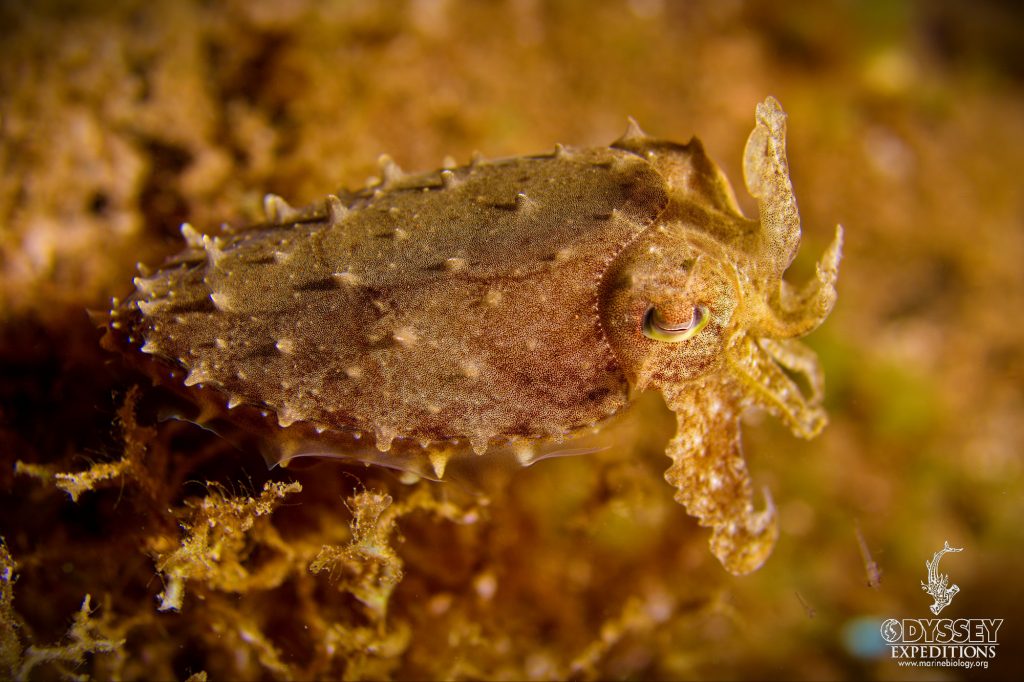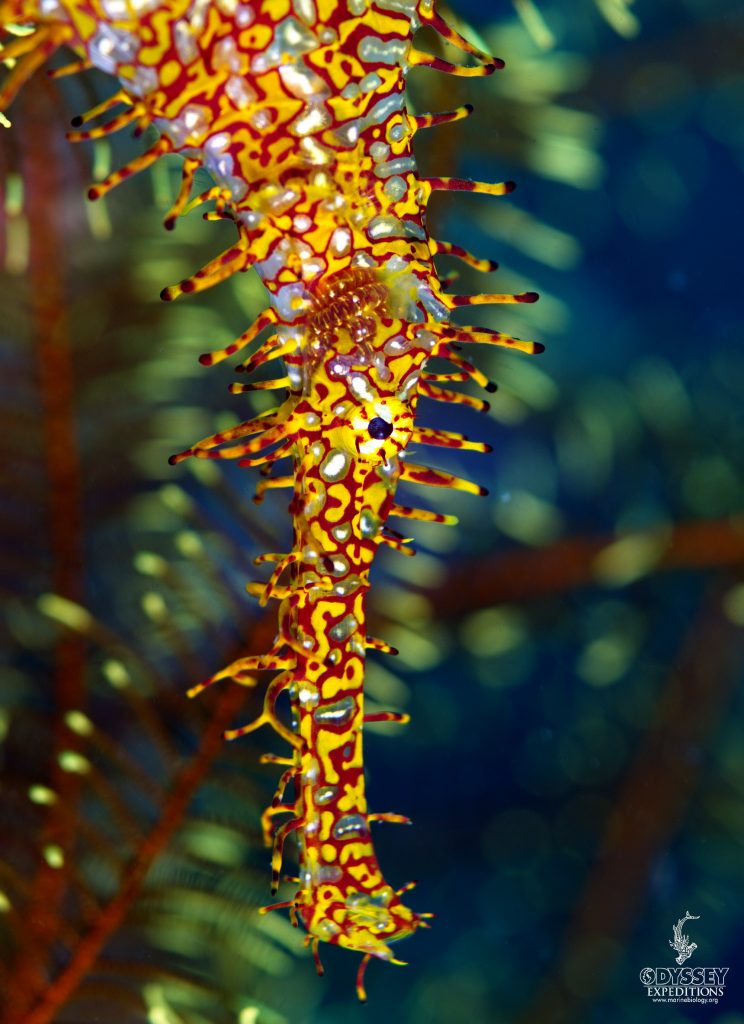
Stumpy Cuttlefish – Dwarf Cuttlefish – Sepia bandensis
This weird and wonderful cuttlefish is not actually a fish but is in fact a mollusk. They have an internal shell (cuttlebone), amazing large W-shaped pupils, eight arms and two tentacles which they use for feeding.
This little fellow was smooth a few moments before and then bumped himself up changed color from almost white to this tan, a true ‘chameleon of the sea’.




